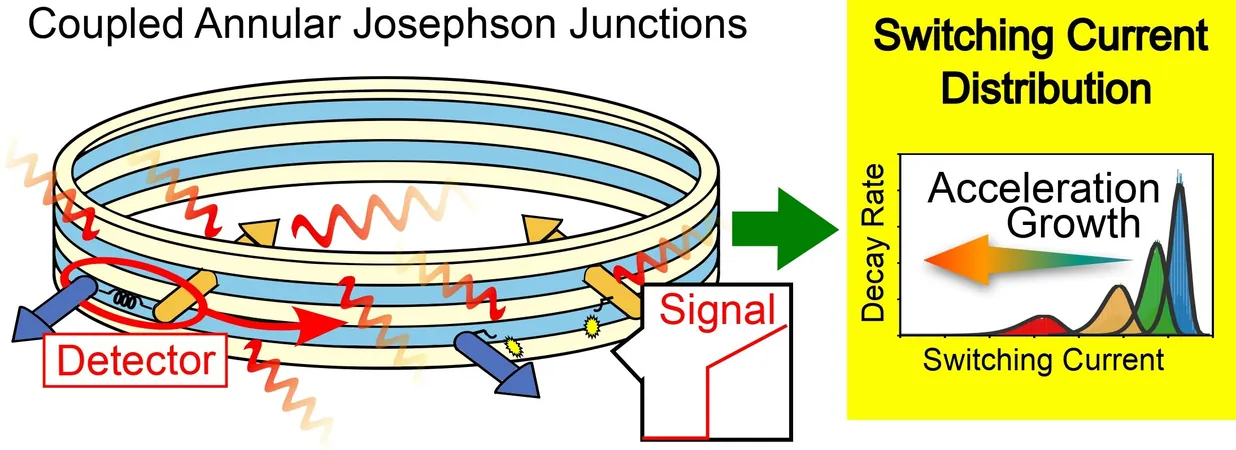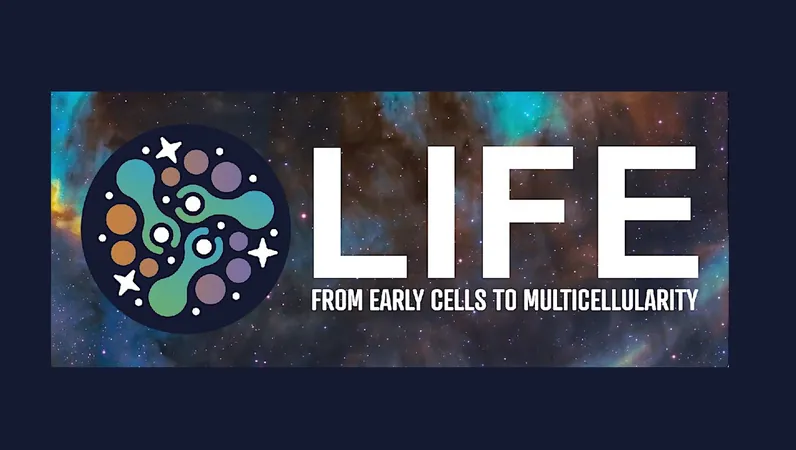
Groundbreaking Method to Unravel the Unruh Effect: A New Dawn for Quantum Physics
2025-09-11
Author: Arjun
A Game-Changer in Fundamental Physics
Researchers from Hiroshima University have created a cutting-edge, highly sensitive method to detect the elusive Unruh effect—a phenomenon that sits at the thrilling intersection of Albert Einstein's Theory of Relativity and Quantum Mechanics. This groundbreaking approach not only promises to advance our understanding of fundamental physics but could also lead to revolutionary technologies in the future.
What Is the Unruh Effect?
The Unruh effect, named after Fulling, Davies, and Unruh, is a fascinating theoretical concept that reveals how observers perceive vacuum energy. In Quantum Theory, the vacuum is not just empty; it's a bubbling sea of energy where virtual particles pop in and out of existence. However, this 'vacuum warmth' isn't detectable by a stationary observer; only those experiencing acceleration will feel it as real particles with thermal properties.
The Challenge of Detection
Despite its incredible implications, detecting the Unruh effect has proven exceptionally challenging due to the immense accelerations—around 10²⁰ m/s²—required for observation. Current technology has struggled to achieve these conditions, particularly in linear acceleration systems.
A Novel Experimental Strategy Unveiled
The Hiroshima University team has proposed a revolutionary experimental method that leverages circular motion of metastable fluxon-antifluxon pairs within specially designed Josephson junctions. Utilizing advancements in superconducting microfabrication, their approach aims to achieve effective accelerations high enough to generate detectable Unruh temperatures of a few kelvin.
"Our work offers a clear and realistic pathway to observe the 'phantom heat' of acceleration for the first time," stated Haruna Katayama, assistant professor at the university. By analyzing the fluctuations caused by this induced acceleration, researchers can witness a significant event—the splitting of fluxon-antifluxon pairs, leading to a noticeable voltage jump across the superconducting circuit.
A Macroscopic Signal of Quantum Fluctuations
This voltage jump acts as an unmistakable signal of the Unruh effect's presence. Researchers can closely analyze the distribution of these jumps to accurately measure the Unruh temperature. Remarkably, this process highlights how microscopic quantum fluctuations can drive unexpected, macroscopic changes, making the previously hidden Unruh effect directly observable.
What's Next for the Researchers?
Moving forward, Katayama expressed excitement about conducting an in-depth analysis of the decay processes of the fluxon-antifluxon pairs. They plan to explore the role of macroscopic quantum tunneling, a fascinating quantum phenomenon that allows particles to pass through barriers, crucial for refining their detection methods.
A Vision for the Future
The research team is not just focused on immediate detection—they aspire to understand potential connections between the Unruh effect and other quantum fields. "By diving deeper into these novel phenomena, we aim to contribute significantly to the quest for a unified theory of all physical laws," said Hatakenaka, professor emeritus.
The implications of their research extend beyond just detecting the Unruh effect. The advanced detection capabilities could transform the landscape of quantum sensing technologies, opening doors to new explorations that probe the very fabric of spacetime and the mysteries of quantum reality. Katayama concludes, "We hope our work will inspire further discoveries in these fundamental areas of physics."




 Brasil (PT)
Brasil (PT)
 Canada (EN)
Canada (EN)
 Chile (ES)
Chile (ES)
 Česko (CS)
Česko (CS)
 대한민국 (KO)
대한민국 (KO)
 España (ES)
España (ES)
 France (FR)
France (FR)
 Hong Kong (EN)
Hong Kong (EN)
 Italia (IT)
Italia (IT)
 日本 (JA)
日本 (JA)
 Magyarország (HU)
Magyarország (HU)
 Norge (NO)
Norge (NO)
 Polska (PL)
Polska (PL)
 Schweiz (DE)
Schweiz (DE)
 Singapore (EN)
Singapore (EN)
 Sverige (SV)
Sverige (SV)
 Suomi (FI)
Suomi (FI)
 Türkiye (TR)
Türkiye (TR)
 الإمارات العربية المتحدة (AR)
الإمارات العربية المتحدة (AR)